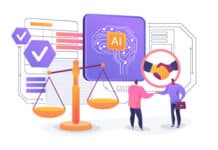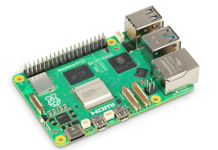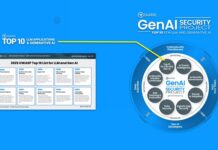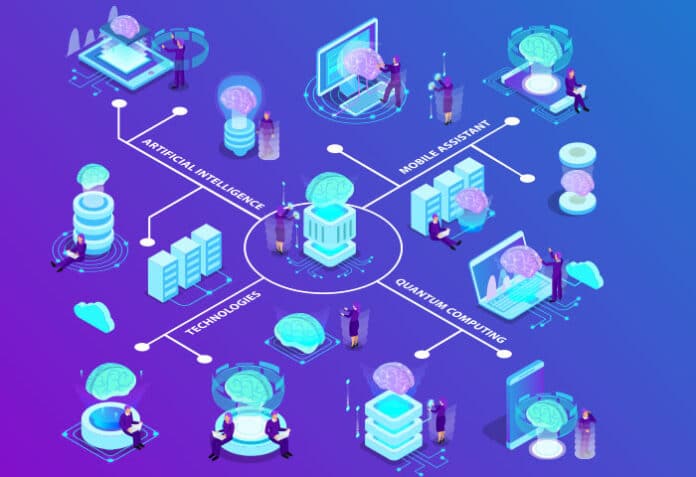Quantum computing has the potential to significantly transform artificial intelligence due to its exponentially faster problem-solving capabilities and capacity to process enormous quantities of data compared to classical computers.
The strength of quantum computing resides in its capacity to utilise qubits, or quantum bits, which can exist in numerous states concurrently. This parallelism brings about a paradigm shift in artificial intelligence by aiding the swift implementation of algorithms that require significant computational resources on traditional hardware.
Quantum AI systems are composed of several architectural components that integrate AI and quantum computing techniques in a synergistic manner. By utilising principles such as superposition, entanglement, and interference, the quantum processing unit (QPU) executes quantum algorithms and conducts quantum operations on qubits. The QPU is the central component of the system.
The quantum software stack comprises libraries, programming languages, and development frameworks specifically designed for artificial intelligence applications. Qiskit, TensorFlow Quantum, and PennyLane are a few instances of frameworks that aid in the formulation and optimisation of algorithms.
Quantum data structures refer to algorithms and structures that have been specifically engineered to efficiently represent and manipulate quantum data. These frameworks facilitate the manipulation, retrieval, and storage of quantum data, which is of the utmost importance for tasks involving quantum machine learning and pattern recognition.
Notwithstanding its potential, quantum AI encounters a number of obstacles that impede its extensive implementation and scalability.
In order to guarantee the dependability and precision of computations, robust error correction techniques and fault-tolerant quantum hardware are required for quantum systems, as these are are susceptible to noise, decoherence, and errors.
One common limitation of quantum processors is their restricted qubit connectivity, which imposes a hindrance on the execution of intricate quantum circuits and algorithms. To overcome limitations imposed by connectivity, it is imperative to devise inventive qubit architectures and optimise circuits.
Current applications of quantum AI
Quantum AI, despite being in its nascent stages, has exhibited encouraging implementations in a multitude of domains (see Table 1).
| Industry | Quantum AI applications |
| Healthcare | Drug discovery: Accelerating molecular simulations for drug discovery, optimising drug design and discovery processes. |
| Medical imaging: Enhancing image processing and analysis techniques for medical imaging, improving diagnostic accuracy and treatment planning. | |
| Genomics: Analysing genomic data and identifying genetic markers associated with diseases, personalised medicine and precision healthcare. | |
| Finance | Risk assessment: Faster risk assessment and portfolio optimisation in financial markets, improving decision-making processes and reducing financial risks. |
| Algorithmic trading: Developing quantum algorithms for high-frequency trading, optimising trading strategies and enhancing market prediction capabilities. | |
| Portfolio management: Quantum-enhanced portfolio optimisation techniques for asset allocation and risk management, maximising investment returns. | |
| Logistics | Supply chain optimisation: Quantum algorithms for route optimisation, inventory management, and supply chain logistics, reducing operational costs and improving efficiency. |
| Demand forecasting: Predicting demand patterns and optimising inventory levels using quantum machine learning techniques, minimising stockouts and overstocking. | |
| Warehouse management: Quantum-inspired algorithms for warehouse layout optimisation and inventory management, enhancing storage efficiency and order fulfilment. | |
| Energy | Energy distribution: Optimising energy distribution networks and grid management using quantum algorithms, facilitating the integration of renewable energy sources. |
| Energy trading: Developing quantum algorithms for energy trading and pricing, optimising energy markets and promoting sustainable energy systems. | |
| Smart grids: Implementing quantum-inspired solutions for smart grid optimisation and demand response management, enhancing grid reliability and efficiency. | |
| Manufacturing | Process optimisation: Quantum algorithms for process optimisation and predictive maintenance in manufacturing, improving production efficiency and reducing downtime. |
| Quality control: Quantum-enhanced quality control techniques for defect detection and product inspection, ensuring product quality and reliability. | |
| Supply chain visibility: Leveraging quantum algorithms for supply chain visibility and traceability, enhancing transparency and accountability in manufacturing processes. | |
| Telecommunications | Network optimisation: Quantum-inspired algorithms for network optimisation, routing, and resource allocation in telecommunications networks, improving network performance. |
| Spectrum management: Quantum algorithms for spectrum management and interference mitigation in wireless communication systems, optimising spectrum utilisation. | |
| Network security: Enhancing network security through quantum-resistant encryption and quantum-inspired security protocols, safeguarding communication channels. |
Table 1: Quantum AI applications in various industries
Drug discovery: Drug discovery is expedited through the utilisation of quantum algorithms, which optimise molecular structures, identify potential drug candidates, and predict molecular properties with extreme precision.
Financial modelling: By facilitating option pricing, portfolio optimisation, and risk assessment in financial markets at a quicker rate, quantum algorithms improve decision-making processes and mitigate financial risks.
Cybersecurity: Quantum-enhanced cryptography provides secure communication protocols resistant to quantum attacks, assuring the confidentiality, integrity, and authenticity of data transmission.
Energy optimisation: By optimising energy distribution networks, resource allocation, and grid management, quantum algorithms reduce carbon emissions and facilitate the transition to sustainable energy systems.
Challenges in developing quantum AI algorithms
- Quantum decoherence: Imagine building a house of cards in a hurricane. Quantum systems are just as delicate. Even the slightest environmental noise can disrupt the fragile quantum states, causing errors and derailing computations. Mitigating decoherence requires advancements in hardware and sophisticated error correction techniques.
- Error correction: Quantum computations are inherently error-prone. Unlike classical bits (0 or 1), qubits exist in a superposition of both states simultaneously. This makes them susceptible to errors during manipulation. Developing robust quantum error correction codes is essential for ensuring the reliability and accuracy of quantum algorithms.
- Limited qubit control: Current quantum computers are like small, noisy aeroplanes. While the number of qubits (quantum bits) is increasing, effectively controlling and manipulating them to perform complex tasks remains a challenge. Imagine trying to fly a formation with a dozen planes, all susceptible to random turbulence.
- Classical-quantum integration: Quantum computers are amazing for specific problems, but most real-world applications require a collaboration between classical and quantum processors. The challenge lies in creating seamless communication channels for these two vastly different systems to exchange information efficiently.
- New algorithm design: Classical algorithms won’t work on quantum computers. It’s like trying to use a screwdriver to fix a spaceship. We need entirely new algorithms designed from the ground up to leverage the unique power of superposition and entanglement for tackling problems intractable for classical computers. This is an exciting area of research, but requires a paradigm shift in how we approach computation.
- Scalability: Imagine building a skyscraper on a foundation meant for a shed. Current quantum algorithms often struggle to scale effectively as the number of qubits increases. Developing algorithms that can efficiently utilise large-scale quantum computers is crucial for unlocking their full potential.
- Verification and validation: How do you know your quantum algorithm is actually working? Verifying and validating the correctness of quantum algorithms is a complex task due to the inherent probabilistic nature of quantum computations. Developing robust verification techniques is essential for building trust in quantum AI applications.
- Limited software development tools: Right now, programming quantum computers is like coding in the dark ages. Developing user-friendly and high-level programming languages and tools specifically designed for quantum algorithms is essential for broader adoption and faster innovation.
- The quantum supremacy race: There’s fierce competition to achieve ‘quantum supremacy’, where a quantum computer demonstrably outperforms a classical computer on a specific task. While this is a milestone, it doesn’t guarantee practical applications. The true challenge lies in developing quantum algorithms that solve real-world problems beyond just theoretical benchmarks.
- The quantum workforce gap: There’s a growing need for a skilled workforce with expertise in both quantum computing and AI. Bridging this gap through education and training programs is crucial for accelerating the development and deployment of practical quantum AI applications.
Quantum advantage for machine learning
The synergy between quantum computing (QC) and machine learning (ML) is a powerful force with the potential to revolutionise various fields.
- Faster training: Quantum computers can tackle specific calculations involved in training ML models much faster than classical computers. This is particularly beneficial for complex models with massive datasets.
- Improved feature engineering: QC can explore vast feature spaces more efficiently, potentially leading to the discovery of hidden patterns and relationships that classical computers might miss. This can significantly improve the accuracy and performance of ML models.
- Optimisation problems: Quantum algorithms excel at solving optimisation problems, a critical aspect of training certain ML models. This can lead to finding more optimal solutions for tasks like hyperparameter tuning.
Machine learning advantage for quantum computing
- Error correction and control: ML algorithms can be used to analyse and correct errors that occur during quantum computations. Additionally, ML can assist in controlling and manipulating qubits more effectively, leading to more stable and reliable quantum systems.
- Quantum algorithm design: Machine learning techniques can be applied to design and optimise quantum algorithms for specific tasks. This can accelerate the development of new and more efficient quantum algorithms.
- Resource optimisation: ML can help optimise resource allocation on quantum computers, ensuring the most efficient use of limited qubits for specific tasks within an ML pipeline.
Benefits of the synergy between quantum computing and ML
- Faster scientific discoveries: By combining QC’s processing power with ML’s analytical capabilities, researchers can explore complex scientific problems in materials science, drug discovery, and more, leading to faster breakthroughs.
- Enhanced AI development: Quantum-powered ML can lead to the development of more powerful and sophisticated AI models capable of tackling problems currently beyond the reach of classical computing.
- Financial modelling and optimisation: The synergy between QC and ML can revolutionise financial modelling by enabling more accurate predictions and optimising investment strategies.
Though in its early stages, this synergy holds immense promise for the future of computing and artificial intelligence.
Solving complex problems with quantum AI
Regular computers are great, but for certain super tough problems they run into a wall. This is where quantum AI comes in. It combines the power of regular AI with the mind-bending world of quantum mechanics to solve problems that were once impossible to solve. Quantum AI excels at tackling a specific category of complex problems — those that involve massive amounts of variables and require exploring a vast solution space.
Here are some in-depth examples showcasing quantum AI’s problem-solving prowess.
- Designing next-generation materials: Imagine designing a material with specific properties, like a superconductor that works at room temperature. Simulating materials at this level is brutally complex for classical computers due to the intricate interactions between atoms. Quantum AI, however, can leverage its ability to handle superpositions (existing in multiple states simultaneously) to analyse these interactions efficiently. This allows for the exploration of a vast range of material properties, accelerating the discovery of groundbreaking materials for batteries, solar cells, and more.
- Drug discovery: Developing new drugs is a painstaking process that involves simulating how potential drug molecules interact with biological targets. This simulation becomes tremendously complicated when dealing with macromolecules like proteins. Quantum AI can tackle this challenge by using its entanglement property, where qubits (quantum bits) are linked and their fates intertwined. This allows for the exploration of various drug-target interactions simultaneously, drastically speeding up the discovery of life-saving medications.
- Financial modelling: The financial market is a chaotic system with countless variables influencing its behaviour. Classical computers struggle to identify hidden patterns and make accurate predictions in this complex environment. Quantum AI, however, can leverage its ability to solve optimisation problems efficiently. By analysing vast datasets of financial data, it can uncover subtle relationships and predict market trends with much greater accuracy, empowering investors with a significant edge.
- Logistics and supply chain optimisation: Optimising logistics networks for efficiency is a notoriously complex problem. Every delivery point, traffic condition, and vehicle capacity needs to be factored in. This becomes intractable for classical computers as the number of variables grows. Quantum AI steps in with its competency in solving combinatorial optimisation problems. By exploring all possible delivery routes simultaneously, it can identify the most efficient routes, leading to significant cost reductions and faster deliveries.
- Machine learning with quantum boost: Training complex machine learning models often requires processing enormous amounts of data. This can take days or even weeks on classical computers. Quantum AI offers a potential solution by leveraging quantum algorithms specifically designed for machine learning tasks. These algorithms can exploit the parallelism of quantum computing to train models significantly faster, leading to more powerful and efficient AI systems.
- Cryptography: The security of our digital world relies heavily on encryption algorithms. However, with the advent of powerful quantum computers, these algorithms might become vulnerable. Quantum AI can be used to both break existing classical encryption methods and develop new, post-quantum cryptography algorithms that are resistant to attacks from quantum computers. This ensures the continued security of our sensitive information in the quantum age.
- Climate modelling: Climate models are crucial for understanding and predicting climate change. These models involve complex simulations of atmospheric and oceanic interactions. Quantum AI can play a role in enhancing the accuracy of these models by efficiently simulating complex weather patterns and climate scenarios. This allows scientists to make more informed decisions about mitigating the effects of climate change.
- Aerodynamics: Optimising the design of aircraft wings for fuel efficiency and performance is a computationally intensive task. Traditional methods rely on trial and error or expensive wind tunnel testing. Quantum AI can provide a faster and more efficient solution. By simulating airflow around different wing configurations, it can identify the most aerodynamic design, leading to the development of more fuel-efficient and environment-friendly aircraft.
- Quantum chemistry: Understanding the behaviour of electrons within molecules is fundamental to chemistry. However, simulating these interactions accurately becomes increasingly complex with larger molecules. Quantum AI offers a path forward by leveraging its ability to model quantum systems efficiently. This allows chemists to design new materials, catalysts, and pharmaceuticals with previously unimaginable properties.
These are just a few examples of how Quantum AI is poised to revolutionise various fields. As quantum computing technology continues to evolve, we can expect even more groundbreaking applications to emerge, tackling problems that were once considered beyond the reach of classical computers.
Quantum neural networks
Quantum neural networks (QNNs) represent a fascinating intersection of artificial intelligence and quantum mechanics. They borrow the structure of classical artificial neural networks (ANNs) but leverage the power of qubits and quantum operations to tackle problems intractable for classical computers. They have the following characteristics.
- Qubits vs bits: Classical ANNs rely on bits, which can be either 0 or 1. QNNs, however, utilise qubits, the quantum equivalent of bits. Qubits can exist in a superposition of states (0 and 1 simultaneously). This allows QNNs to explore a vast amount of data simultaneously, leading to potential speedups for specific problems.
- Quantum gates: Classical ANNs use mathematical functions (e.g., sigmoid) as activation functions. QNNs employ quantum gates (e.g., Hadamard gate, Pauli-X gate) to manipulate qubits. These gates perform operations on qubits while preserving the superposition of states. Unlike classical activation functions, quantum gates are reversible, meaning the operation can be undone.
Their features are:
- Parallelism: Superposition allows QNNs to explore multiple possibilities at once. Imagine a maze – a classical computer would have to explore each path one by one, while a QNN can explore all paths simultaneously, potentially finding the exit much faster for certain problems.
- Expressive power: Entanglement, another mind-bending principle of quantum mechanics, allows qubits to be linked. When entangled, the fates of these qubits are intertwined. This lets QNNs represent complex relationships between data points more efficiently compared to classical ANNs.
This is how they work.
- Input layer: Similar to classical ANNs, QNNs have an input layer that receives data. This data is then encoded into qubits, representing the initial state of the network.
- Hidden layers: QNNs consist of multiple hidden layers, each containing qubits. Quantum gates are applied sequentially to these qubits, manipulating their superpositions and entanglements. These operations transform the input data, allowing the network to learn patterns and features.
- Output layer: The final layer of the QNN also contains qubits. Here, a measurement is performed, collapsing the superposition of states into a single classical output. This output could be a classification (e.g., identifying a handwritten digit), a prediction (e.g., forecasting stock prices), or some other relevant information.
QNNs are a nascent field with significant hurdles. Building and controlling large-scale quantum computers needed for powerful QNNs remains a challenge. Additionally, training QNNs is complex and requires specialised algorithms. Despite the challenges, QNNs hold immense potential for applications in various domains.
The complexity of designing quantum algorithms that take advantage of the distinctive characteristics of qubits while also overcoming the constraints of classical computing presents a challenge for researchers and developers, as it necessitates proficiency in both quantum physics and artificial intelligence.
Quantum computing resources are presently constrained in terms of qubit count, coherence time, and gate fidelity; these limitations impede the efficacy and scalability of quantum AI algorithms. It is essential to scale quantum systems and enhance their hardware capabilities in order to fully exploit their potential.
Further progress in quantum hardware will result from ongoing research and development. These efforts will contribute to the fabrication of quantum processors that are more stable and capable of handling more complex quantum algorithms. Such processors will feature increased qubit counts, coherence periods, and gate fidelities.
Hybrid quantum-classical approaches are expected to gain prominence in the near future. These algorithms capitalise on the respective advantages of classical and quantum computing paradigms to tackle a diverse array of artificial intelligence tasks efficiently and effectively.
The commercialisation and adoption of quantum AI solutions will occur in tandem with the maturation of quantum computing technologies. This will bring about significant transformations in various sectors, including healthcare, finance, logistics, and cybersecurity.
















































































